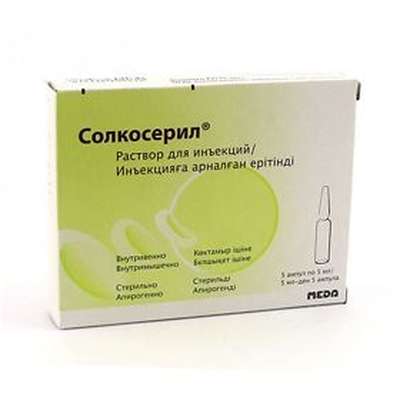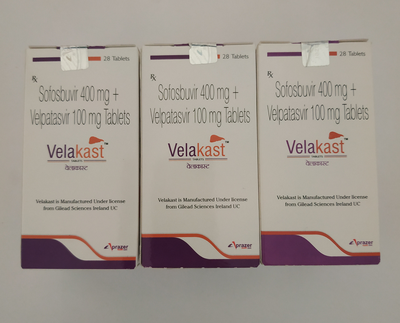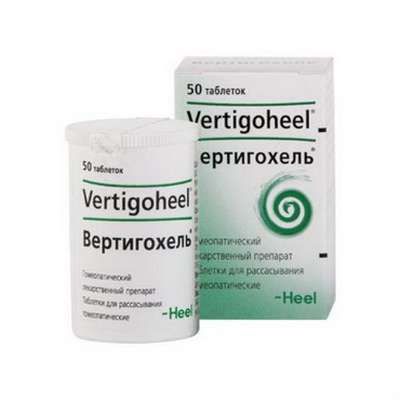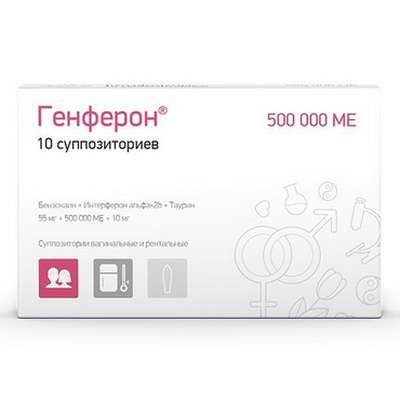Instruction for use: Proleukin
I want this, give me price
Dosage form: Lyophilizate for the preparation of a solution for intravenous and subcutaneous administration
Active substance: Aldesleukinum
ATX
L03AC01 Aldesleikin
Pharmacological groups:
Other antineoplastic agents
Interleukins
The nosological classification (ICD-10)
C43 Malignant melanoma of skin: Malignant melanoma; Localized malignant melanoma; Localized form of malignant melanoma; Melanoma; Melanoma after surgical resection; Metastatic melanoma; Common metastatic malignant melanoma; Metastasizing form of malignant melanoma; Disseminated malignant melanoma
C64 Malignant neoplasm of kidney, other than renal pelvis: Wilms tumor; Kidney Cancer; Metastatic Renal Cell Carcinoma; Renal carcinoma; Inoperable kidney carcinomas; Metastatic kidney carcinoma; Metastatic Renal Cell Carcinoma; Wilms tumor; Wilms swelling; Adenomyosarcoma; Adenomyocystosarcoma; Adenosarcoma of the kidney; Kidney Cancer; Common renal cell carcinoma; Nephroblastoma; Nephroma; Embryonal nephroma; Recurrent carcinoma of the kidney; Birch-Hirschfeld Tumor; Common renal cell carcinoma; Tumors of the kidney
Composition and release form
Lyophilizate for the preparation of a solution for subcutaneous and intravenous administration of 1 vial.
Aldesleukin 1.1 mg
(Corresponding to 18 ˇ 106 IU)
Auxiliary substances: mannitol; Sodium dodecyl sulfate; Sodium dihydrogen phosphate (pH regulator); Sodium hydrophosphate (pH regulator); nitrogen
In the box 1 pc.
Description of dosage form
Amorphous lyophilized white powder (sterile).
Characteristic
Remedy from the group of cytokines. It is a recombinant human interleukin-2 (rIL-2).
Pharmachologic effect
Mode of action - Immunomodulating, antitumor.
Pharmacodynamics
Stimulates endogenous immune defense; Activates T-lymphocytes and natural killer cells involved in the mechanisms of recognition and destruction of tumor cells. Recombinant IL-2 promotes the production of antibodies by B-cells, stimulates the secretion of secondary cytokines, complement factors, and also triggers mechanisms for releasing hormones. The exact mechanism of immunostimulation with an antitumor effect mediated by the drug has not been clarified.
Pharmacokinetics
The T1 / 2 curve in blood serum for iv injection is bi-exponential. T1 / 2α is 13 minutes, T1 / 2β is 85 minutes. With n / k introduction, the kinetic properties of the drug can be described using a single-chamber model, with T1 / 2 being 5.3 h. A longer T1 / 2, as compared with the intravenous administration, is due to the continued absorption of the drug from the subcutaneous tissue at the site Introduction during the elimination phase from the plasma. Absolute bioavailability varies between 35-47%. It is excreted mainly by the kidneys, with most of the dose (87%) being metabolized with the formation of biologically inactive metabolites. The secondary way of excretion is receptor-dependent capture by target cells (against the background of long-term administration of the drug). The determined value of clearance in humans as a result of a short-term (for 15 min) and prolonged (24-hour) iv administration of the substance approximately corresponds to the glomerular filtration rate.
Indication of the drug Proleukin
Metastatic renal cell carcinoma;
melanoma.
Contraindications
Hypersensitivity (including to auxiliary substances);
Status of ECOG patients ≥2, ECOG status ≥1 and metastatic disease of more than one organ;
The period between the initial diagnosis of the primary tumor and the beginning of therapy with Proleukin for less than 24 months;
Severe cardiovascular diseases (including in the anamnesis);
Severe infections requiring antibiotic therapy;
Level pO2 at rest <60 mm Hg. P.
Metastasis in the central nervous system;
Convulsive seizures, except for patients with a positive effect on appropriate therapy (lack of metastases according to computed tomography, stabilization of the neurological status).
Relative:
Autoimmune diseases;
The number of leukocytes is <4000 / mm3, platelets <100000 / mm3, hematocrit <30%;
Elevated serum levels of bilirubin and creatinine;
Transferred organ allotransplantation;
Concomitant therapy with corticosteroids.
Application of pregnancy and breastfeeding
Not recommended in pregnancy (efficacy and safety of the drug during pregnancy is not established). At the time of treatment should stop breastfeeding (data on the excretion of the drug with breast milk and its effect on lactation there).
Side effects
The frequency and severity of Proleukin's adverse reactions depend on the dosage and mode of administration and are presented in the table. Most side effects are reversible and disappear after a 1-2 day break in therapy.
Determination of the frequency of the following adverse reactions: most frequent (≥1 / 10), frequent (<1/10, ≥1 / 100), infrequent (<1/100, ≥1 / 1000), rare (<1/1000, ≥ 1/10000), extremely rare (<1/10000).
Table
Side effects of Proleukin
| Frequency of side effects | The route of administration | |
| IV infusion | SC infusion | |
| The cardiovascular system | ||
| The most frequent | Pronounced hypotension, tachycardia | Hypotension, pain in the heart, including angina |
| Frequent | Arrhythmia, hypertension, phlebitis | Hypertension, tachycardia |
| Infrequent | Stenocardia of tension, thrombosis, palpitations, transient ECG disorders, myocardial infarction, myocarditis, cardiomyopathy | Arrhythmia, myocardial ischemia, myocardial infarction, cerebrovascular disorders |
| Rare | Hypokinesia of the ventricular wall, thromboembolism | Heart failure, (thrombotic) phlebitis, thromboembolism of the pulmonary artery |
| Kidneys | ||
| The most frequent | Oliguria, elevated levels of urea, creatinine | - |
| Frequent | Hematuria | Oliguria, elevated levels of urea and creatinine |
| Infrequent | Renal insufficiency | Hematuria, kidney failure |
| Respiratory system | ||
| The most frequent | Dispno, cough | Dispno, cough |
| Frequent | Lung edema, cyanosis, hypoxia, respiratory tract infection, pleurisy | - |
| Infrequent | Nasal bleeding | Respiratory tract infection |
| Rare | Respiratory distress syndrome | Pulmonary edema, effusion in the pleural cavity |
| GIT | ||
| The most frequent | Nausea, vomiting, diarrhea, anorexia | Nausea, vomiting, diarrhea, anorexia, stomatitis |
| Frequent | Dysphagia, indigestion, constipation, gastrointestinal bleeding, Hyperbilirubinemia, elevation of the level of hepatic transaminases, alkaline phosphatase | Constipation, gastrointestinal bleeding, elevation of the level of hepatic transaminases, alkaline phosphatase and lactate dehydrogenase |
| Infrequent | - | Heilit, gastritis, hyperbilirubinemia |
| Rare | Gastritis, cholecystitis, exacerbation of Crohn's disease | Pancreatitis, intestinal obstruction |
| Nervous system | ||
| The most frequent | Anxiety, confused consciousness, drowsiness, dizziness | Dizziness |
| Frequent | Violation of mental status, including agitation, paresthesia, syncope, depression, hallucinations | Violation of mental status, including irritability, anxiety, confusion, drowsiness, central and peripheral motor disorders, paresthesia, neuropathy, insomnia |
| Infrequent | Central and peripheral motor disorders, paralysis | Excitation, convulsions, hallucinations |
| Rare | Convulsions, lethargy, coma, lesions of cortical structures | - |
| Skin and mucous membranes | ||
| The most frequent | Erythema / rash, itching, scaling of the skin | Erythema / rash |
| Frequent | Conjunctivitis, mucositis, alopecia, nasal crusts | Peeling and itching of the skin, sweating |
| Infrequent | Vitiligo | Alopecia, inflammation of the mucous membranes |
| Rare | - | Conjunctivitis |
| Blood | ||
| In the course of therapy, most patients experience lymphocytopenia and eosinophilia, followed by compensatory lymphocytosis 24-48 hours after treatment. The above changes are not considered a side effect and can be attributed to manifestations of the antitumor mechanism of Proleukin | ||
| The most frequent | Anemia, thrombocytopenia | - |
| Frequent | Leukopenia, coagulation disorders | Anemia, thrombocytopenia, leukopenia |
| Infrequent | Bleeding | Bleeding |
| Local Reactions | ||
| The most frequent | - | Pain, inflammation at the injection site |
| Frequent | - | Sealing at the injection site |
| Rare | - | Necrosis at the injection site |
| Change in laboratory indicators | ||
| Frequent | Hyperglycemia, hypocalcemia, hyperkalemia | Hyperglycaemia |
| Infrequent | Hypo- or hyperthyroid status | Hypo- or hyperthyroid status, hypo- or hypercalcemia, hyperkalemia |
| Other side effects | ||
| The most frequent | Weight gain, swelling, fever, chills, malaise, weakness, headaches | Fever, chills, malaise, headache, weight loss |
| Frequent | Painful sensations, arthralgia, myalgia, ascites | Arthralgia, overweight, swelling, dehydration, myalgia, hypothermia |
| Infrequent | - | Myasthenia gravis, hypersensitivity reactions (including Quincke's edema), loss of taste |
| Rare | Hypersensitivity reactions, anaphylaxis, diabetes mellitus | Anaphylaxis |
Comments: cardiac rhythm disturbances (supraventricular and ventricular arrhythmia), angina pectoris, myocardial infarction, respiratory failure, gastrointestinal bleeding or ischemia, renal failure, edema and mental status disorders may be associated with a syndrome of increased vascular permeability.
Bacterial infections or weighting of their course, including septicemia, bacterial endocarditis, septic thrombophlebitis, peritonitis and pneumonia, occur more frequently on the background of intravenous administration.
Interaction
Hepatotoxic, nephrotoxic, myelotoxic and cardiotoxic drugs increase the toxic effect of Proleukin. Glucocorticoids reduce toxicity and therapeutic effect. Antihypertensives, including beta-blockers, increase hypotension.
The use of contrast agents at the end of a course of therapy with Proleukin may lead to the resumption of toxic phenomena noted during the use of the drug. Most toxic effects were noted 2 weeks after the last dose of Proleukin, but the possibility of their development persists for several months.
When combined with high doses of Proleukin and antitumor drugs, especially those containing dacarbazine, cisplatin, tamoxifen and interferon alpha, hypersensitivity reactions are noted (develop several hours after the administration of chemotherapeutic drugs and include erythema, pruritus, hypotension).
With the combined use of proleukin (iv) and interferon alfa, severe forms of rhabdomyolysis and myocardial damage are possible, including myocardial infarction, myocarditis and foci of hypokinesia, enhancement or initial manifestations of autoimmune and inflammatory diseases, including IgA nephropathy, oculobulbar myasthenia gravis, inflammatory arthritis, Thyroiditis, bullous pemphigoid and Stevens-Johnson syndrome.
Dosing and Administration
SC, IV. Dosage regimen with SC introduction: 18 ˇ 106 IU daily for 5 days, then - break 2 days. For the next 3 weeks, on the first and second days of each week, they are 18 ˇ 106 IU and 9 ˇ 106 IU every 3-5 days. At 6-7 days of the week - a break. At the end of the 4-week cycle, take a break for 1 week, then repeat the cycle again. In the presence of positive dynamics or stabilization of the tumor process, supporting cycles are recommended.
Dosage regimen for intravenous administration: 18 ˇ 106 IU in the form of 24 hours of continuous infusion for 5 days, then - break 2-6 days, continue for 5 days in / in the infusion (induction cycle). After a 3-week break, a second induction cycle should be performed. In the presence of positive dynamics or stabilization of the tumor process, supporting cycles (18 ˇ 106 IU for 24 hours of continuous infusion over 5 days) are recommended with 4-week intervals.
The contents of the Proleukin vial should be diluted in 1.2 ml of water for injection. The solvent is introduced into the wall of the vial (to avoid foaming) and carefully dissolve the contents with gentle rocking. Do not shake. The resulting solution is a clear, colorless liquid.
For intravenous administration, the daily dose dissolved in water for injection is diluted in 500 ml of 5% dextrose for injection containing 0.1% human albumin. Human albumin should be added and mixed with dextrose for injection before Proleukin is added. Before use, the temperature of the solution should be brought to room temperature.
If the drug is intolerant in this mode, you should reduce the dose or stop therapy before reducing the toxic effects.
Overdose
Symptoms: increased side effects.
Treatment: discontinuation of the drug, symptomatic therapy.
Precautionary measures
Therapy should be conducted only under the supervision of a physician of appropriate qualifications who has experience in the use of chemotherapeutic drugs. With / in the use of the drug, it is recommended that the patient be hospitalized in a specialized hospital with an intensive care unit, in order to monitor the clinical and laboratory indicators. SC administration can be performed by qualified personnel on an outpatient basis.
It is not recommended to persons of both sexes in the reproductive age, if they do not use contraceptives.
Care should be taken when prescribing the drug to older patients (the likelihood of developing side effects is higher).
Care should be taken when prescribing medications that have a nephro- or hepatotoxic effect (possibly renal and hepatic metabolism and excretion in the background of Proleukin).
Proleukin therapy in the recommended dosing regimen in most patients is accompanied by fever and side effects from the gastrointestinal tract. On the background of therapy with Proleukin, antipyretic agents containing paracetamol are possible. To reduce the chills associated with fever, it is possible to use pethidine. With side effects from the gastrointestinal tract, antiemetic and anti-diarrheal remedies are recommended. In some patients with skin rashes, it is possible to improve the condition when prescribing antihistamines.
Patients with renal and hepatic insufficiency should carefully monitor the level of hepatic transaminases, bilirubin, urea and creatinine in the serum.
In the first hours after the beginning of the use of the drug (more often with IV introduction), a syndrome of increased vascular permeability, characterized by a decrease in vascular tone, the release of proteins from plasma and fluid into the extravascular space and accompanied by hypotension and decreased perfusion of organs, is possible. Sometimes hypotension passes independently, in other cases, the introduction of infusion solutions, albumin, sometimes require dopamine (in low doses). If the treatment is ineffective, you should suspend therapy with Proleukin.
Before starting the use of the drug should take measures to prevent conditions associated with an increase in the amount of effusion in the serous cavities.
It is necessary to assess the functional state of the lungs in patients with wheezing or high respiratory rate, with complaints of dyspnea (against the background of intravenous administration, the development of the phenomena of respiratory failure is possible).
With the development of a lethargic state or somnolence, discontinue the administration of the drug, because Continuation can provoke the development of a deep coma.
Before the start of treatment should be a full diagnostic study to identify metastases in the central nervous system.
A careful laboratory test should be carried out for thyroid disorders and other conditions that are based on disorders of the immune system.
Therapy with Proleukin should be carried out after the complete cure of existing bacterial infections.
Before the beginning of therapy with Proleukin, the following studies should regularly be performed: standard hematological (counting the number of blood elements), biochemical (including electrolyte analysis, kidney and liver functional tests), chest X-ray, ECG (according to stress -test), evaluation of the physical condition, the basic clinical parameters, the study of coronary vessels, pulmonary function, including determining arterial blood gas smoking patients yl patients with respiratory diseases.
The reaction at the site of subcutaneous application of the drug can be reduced by changing the injection site.
Safety and efficacy of Proleukin in the treatment of children has not been established.
Special instructions
Violation of the procedure for the preparation of a solution (iv) and its dilution (iv) may lead to a decrease in the biological activity of the preparation and / or the formation of a biologically inactive protein.
During the preparation of the solution, use of bacteriostatic water for injection or 0.9% sodium chloride solution should be avoided due to considerable aggregation of the substance.
Do not mix Proleukin with other medicinal substances.
When introducing Proleukin, do not use systems with built-in filters.
Any unused solution or vial should be disposed of in accordance with the requirements for the handling of biohazardous materials.
Patients receiving Proleukin should not drive a car or machinery until the adverse effects disappear completely.
Storage conditions of the drug Proleukin
At a temperature of 2-8 ° C (do not freeze).
Keep out of the reach of children.
Shelf life of the drug Proleukin
2 years.
Do not use after the expiry date printed on the package.

 Cart
Cart





